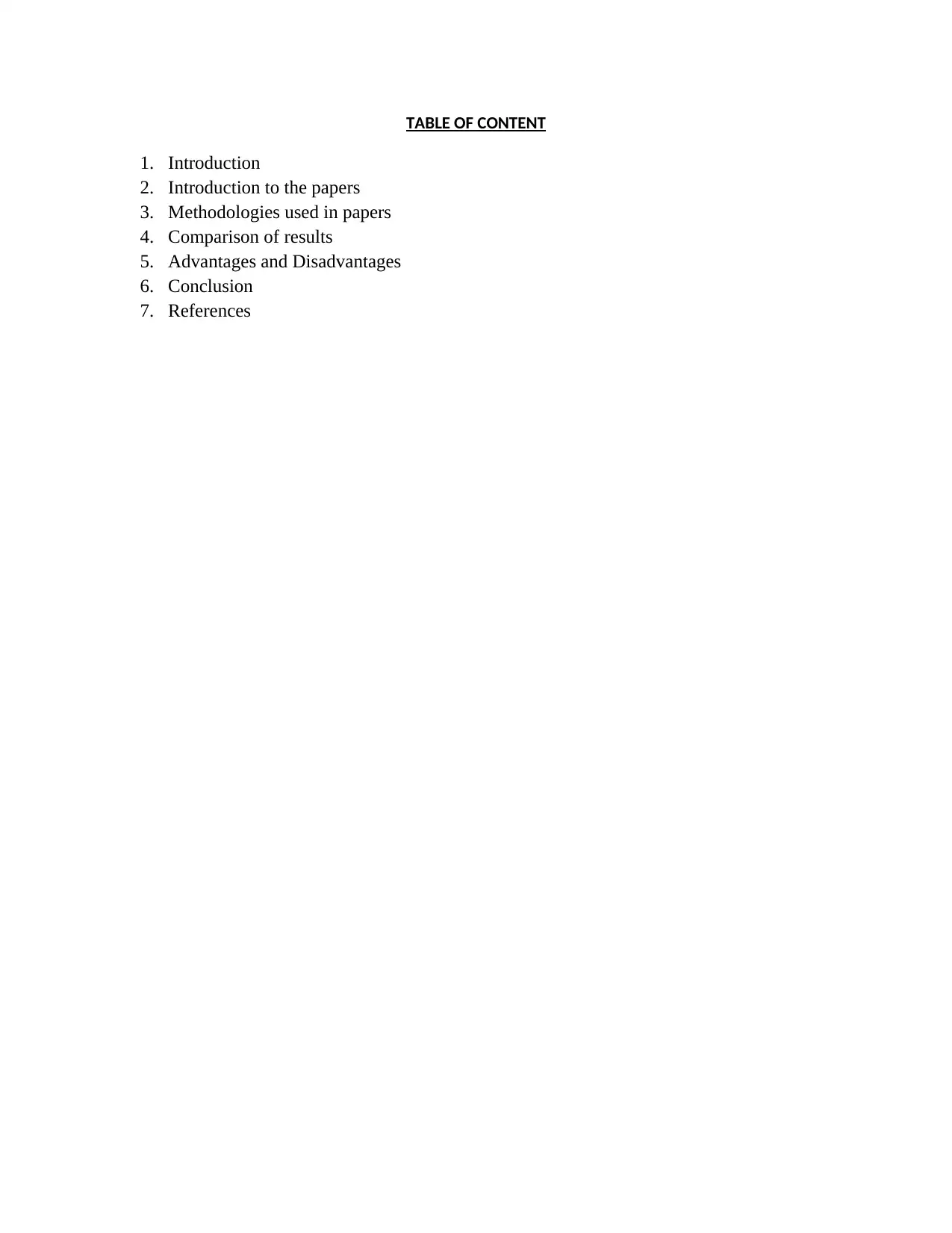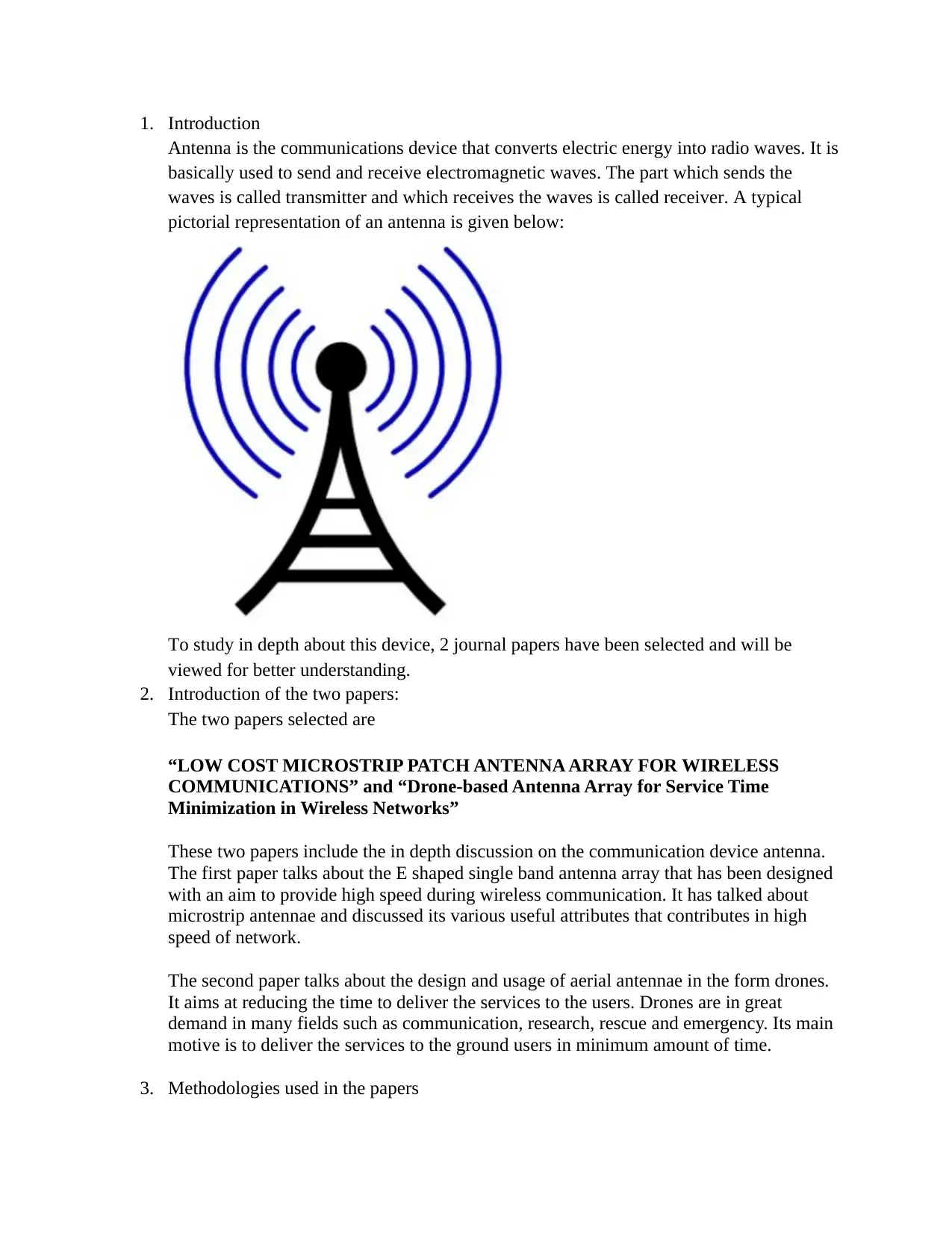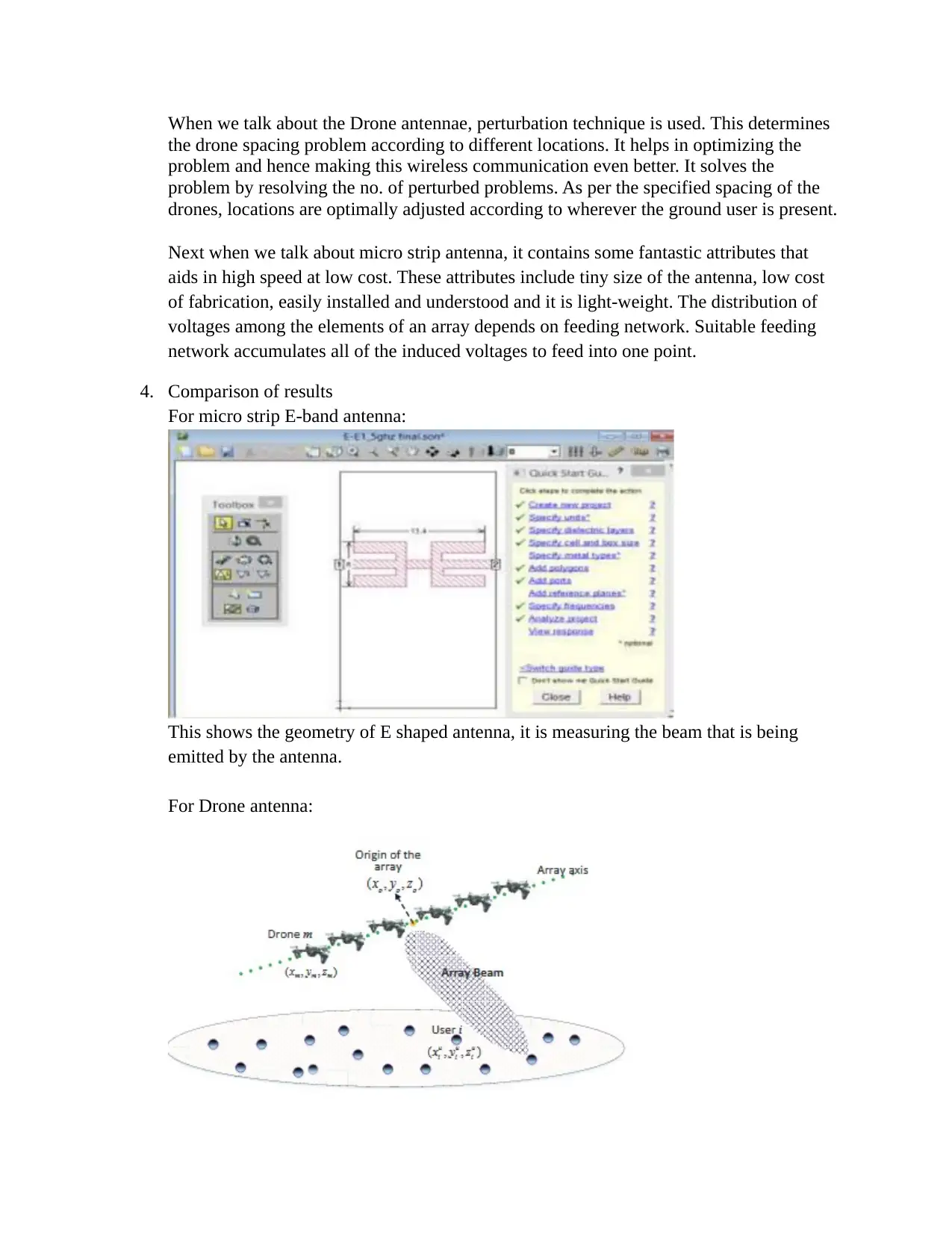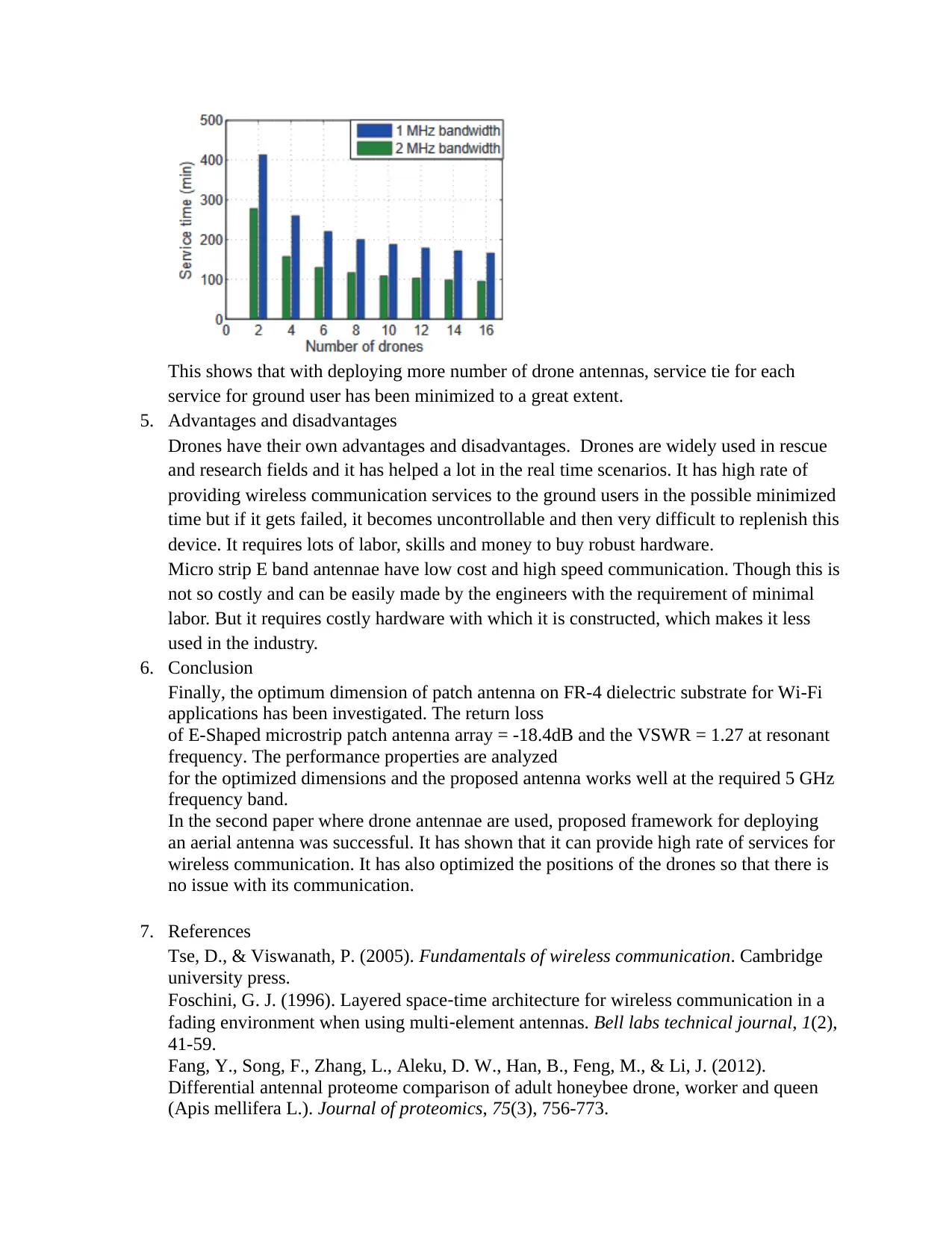Wireless Communication Research: Antenna Papers Comparison Report
VerifiedAdded on 2019/10/30
|6
|907
|143
Report
AI Summary
This report provides an in-depth analysis of two research papers focused on wireless communication antennas. The first paper investigates an E-shaped microstrip patch antenna array, highlighting its attributes like small size, low cost, and ease of installation, and its role in high-speed wireless communication. The second paper explores the use of drone-based antenna arrays to minimize service time in wireless networks, discussing the application of perturbation techniques for optimal drone placement. The report compares the methodologies, results, advantages, and disadvantages of both antenna types, including return loss and VSWR for microstrip antennas and service time optimization for drone antennas. The conclusion summarizes the performance of the E-shaped antenna and the success of the drone antenna framework in providing high-rate wireless communication services.
1 out of 6







![[object Object]](/_next/static/media/star-bottom.7253800d.svg)